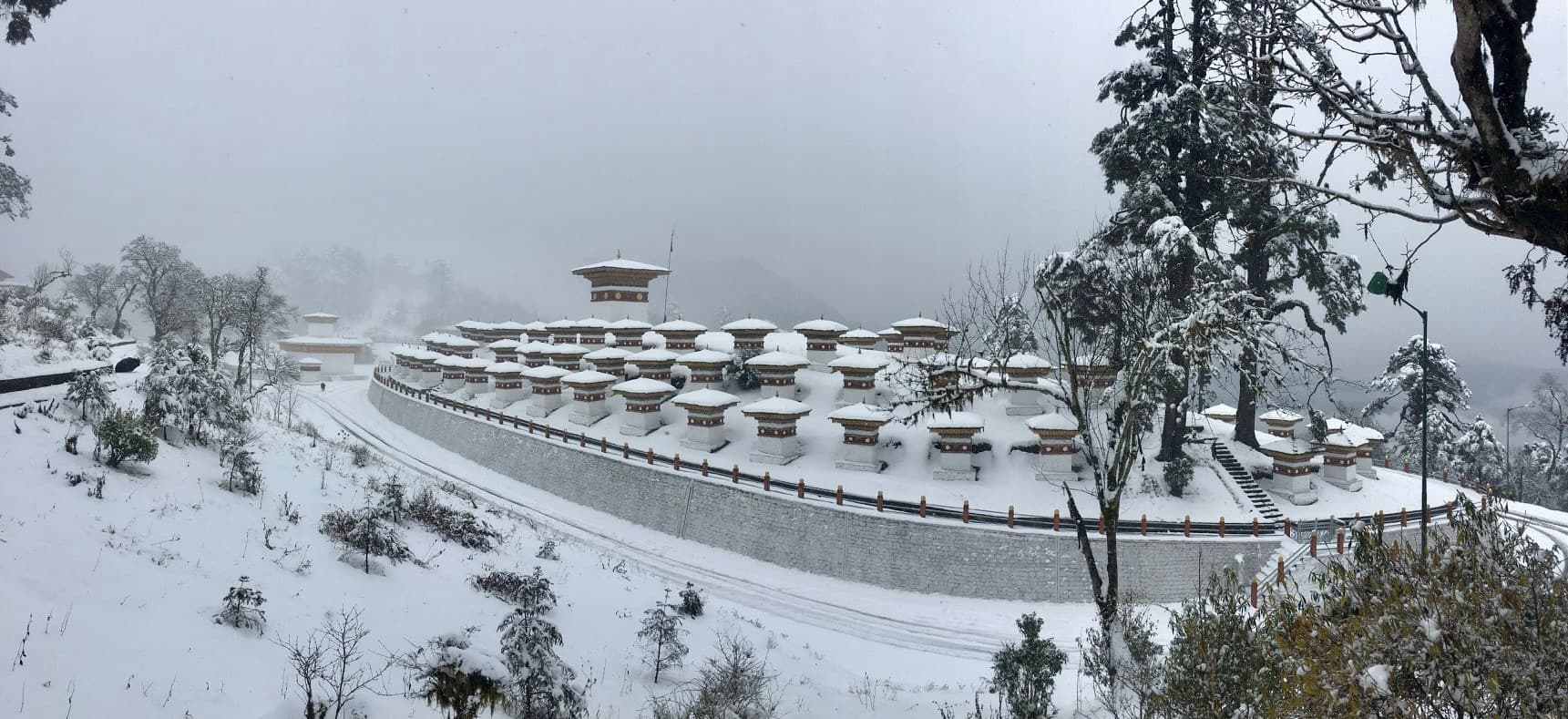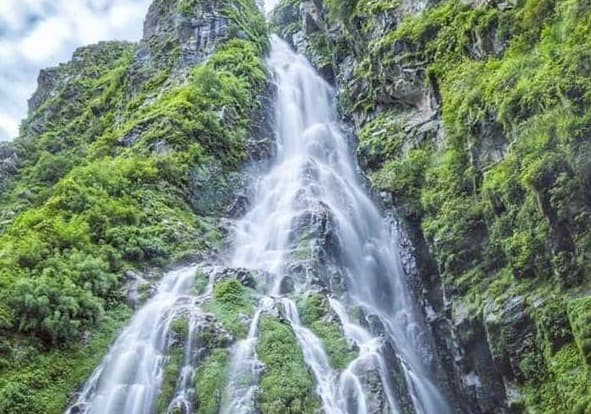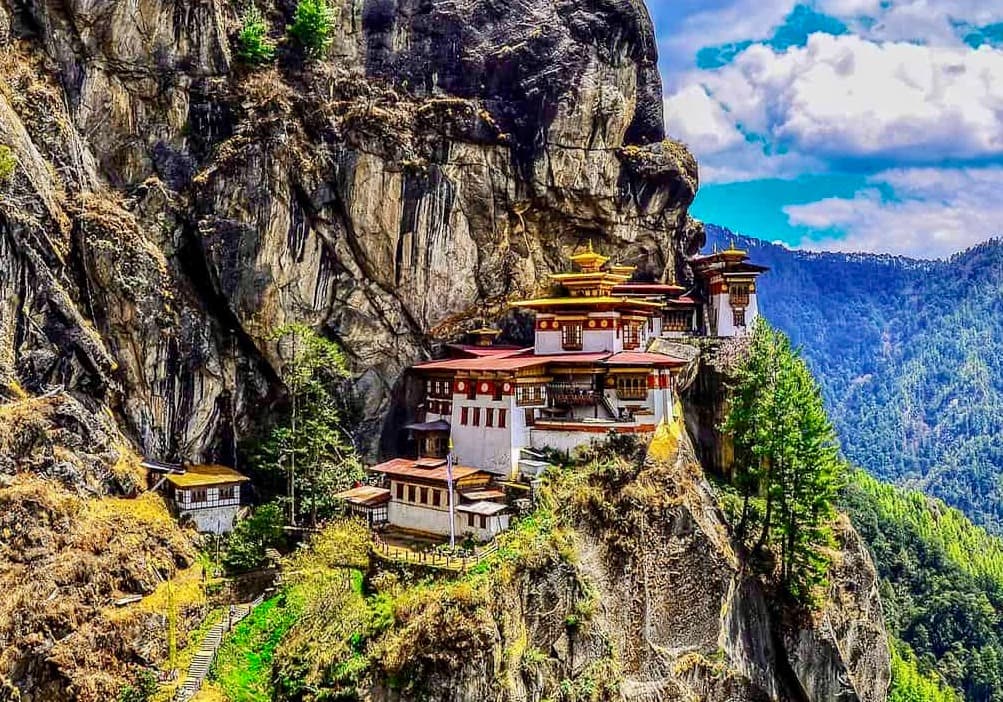Bhutan, often referred to as the Last Shangri-La, is a land of stunning natural beauty and diverse climatic conditions. Nestled in the heart of the Himalayas, the Weather and Climate in Bhutan are as varied as its landscapes. From the dense forests of the south to the towering peaks in the north, each region presents a different atmospheric personality. The country is characterized by its Bhutan Climate Zones, ranging from subtropical warmth in the lower parts to alpine chill in the high altitudes. This diversity in climate plays a pivotal role in shaping the daily lives of the Bhutanese people and the experiences of visitors. Understanding the nuances of the Bhutan Weather by Month and the Bhutan Seasonal Weather Patterns is crucial for anyone planning a trip to this mystical kingdom. Whether it's the wet Bhutan Monsoon Season or the pleasant autumn months, each period offers unique opportunities to explore and experience Bhutan's rich culture and breathtaking landscapes.
Spring (March to May)
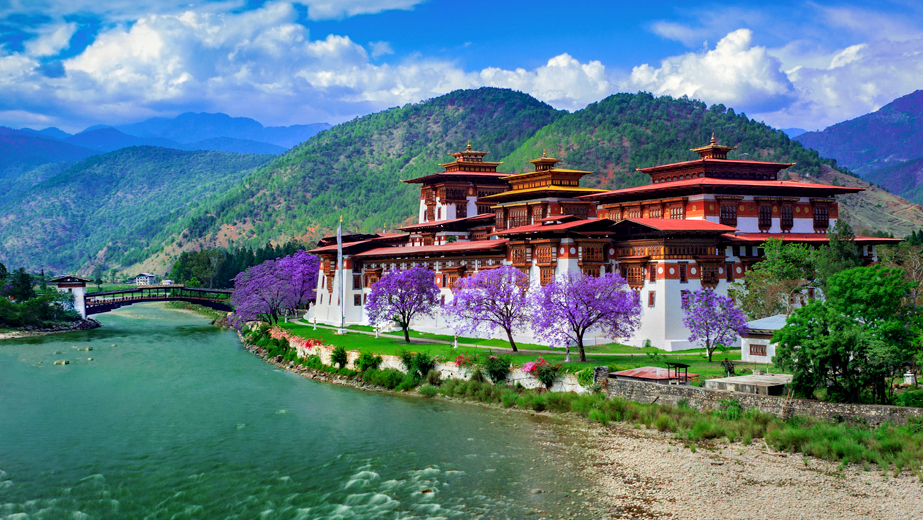
Spring Season
- Characteristics: Spring is a vibrant and lively time in Bhutan. It is characterized by moderate temperatures and a gradual end to the chilly winter.
- Weather: The weather is generally dry with occasional showers towards the end of the season, leading to a flourish of flora.
- Activities: This is an ideal time for trekking, as the paths are usually dry, and the mountains and valleys are lush with blooming flowers, including the famous rhododendrons.
Summer (June to August)
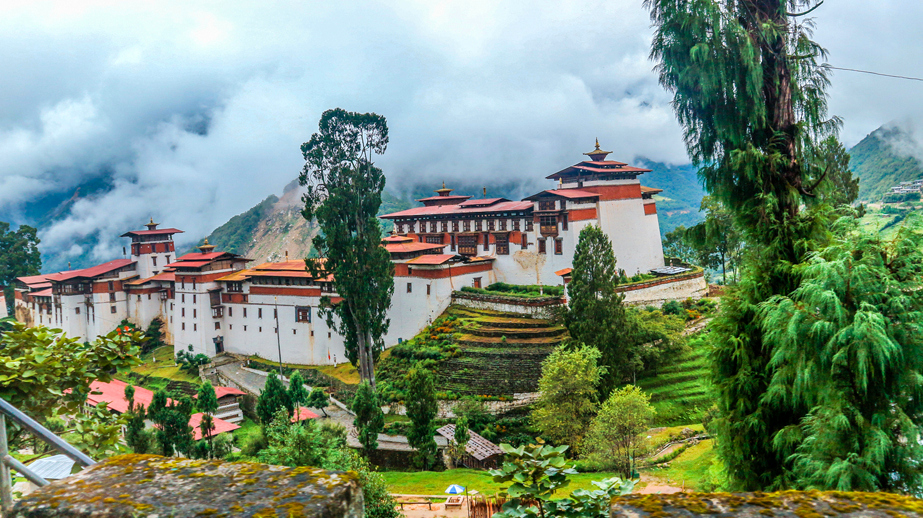 Summer/Monsoon Season
Summer/Monsoon Season- Characteristics: Summer in Bhutan coincides with the monsoon season.
- Weather: The country experiences significant rainfall, particularly in the southern regions, which brings freshness and a vibrant green hue to the landscape.
- Impact: While the heavy rains can make trekking challenging, this is also a time when the country’s flora and fauna are at their most vibrant.
Autumn (September to November)

Autumn Season
- Characteristics: Autumn is often considered the best time to visit Bhutan due to its clear skies and mild weather.
- Weather: The monsoon rains have passed, leaving the air fresh and the sky clear, offering excellent conditions for trekking and stunning views of the Himalayas.
- Cultural Significance: This season is also popular for its numerous festivals, including the famous Tshechu festivals, which offer a glimpse into Bhutan's rich cultural heritage.
Winter (December to February)
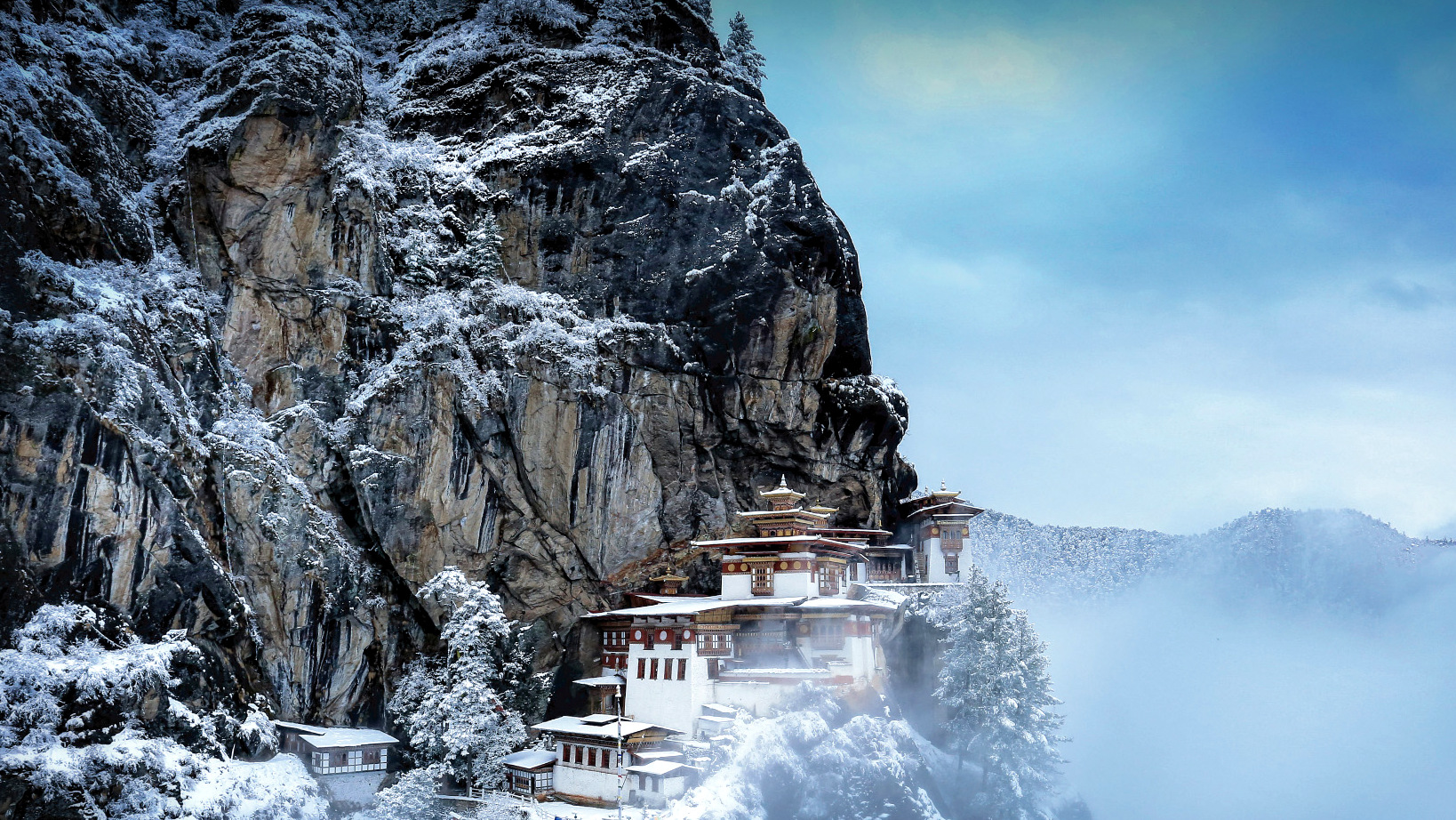
Winter Season
- Characteristics: Winter brings a calm and serene atmosphere to Bhutan.
- Weather: The northern mountain regions can be quite cold with snowfall, while the central and southern regions experience mild and dry weather.
- Advantages: This season is perfect for bird watching and exploring the lower altitude regions. It's also a time for clear mountain views, although the cold can be a deterrent for some travelers.
Each season in Bhutan offers a distinct experience, from the blooming valleys of spring to the crisp, clear days of winter. Understanding these seasonal variations is crucial for planning a visit, as they not only affect the type of activities you can engage in but also the kind of clothing and gear you should pack. Whether it's the cultural festivities, natural beauty, or adventure activities, each season in Bhutan has something unique to offer, making it a year-round destination for different types of travelers.
Rainfall Patterns
Rainfall in Bhutan plays a crucial role in shaping the country's unique weather patterns and climate, significantly impacting its diverse ecosystems, agriculture, and daily life. Bhutan's rainfall patterns are characterized by their variability across different regions and seasons, primarily influenced by the monsoon system and the country's varied topography. Here's an overview of the rainfall patterns in Bhutan:
Monsoon Influence: The most significant source of rainfall in Bhutan is the Indian summer monsoon. It typically starts in June and lasts until late September, bringing substantial moisture-laden winds from the Indian Ocean.
Regional Variability
- Southern Bhutan: The southern regions, being closer to the Indian plains, receive the most rainfall. This area experiences a true monsoon climate with heavy, sustained rains during the summer months.
- Central Valleys: The central part of Bhutan, which includes popular tourist destinations like Thimphu, Paro, and Punakha, receives moderate rainfall. The monsoon effects are less intense here compared to the south.
- Northern Bhutan: The northern high-altitude regions, near the Himalayas, receive the least amount of rainfall. The high mountains act as a natural barrier, preventing most of the monsoon clouds from reaching these areas.
Seasonal Distribution
- Summer (June to August): The peak of the monsoon brings the heaviest rainfall, especially in the south and central regions. The intensity and frequency of rainfall decrease as one moves northwards.
- Spring and Autumn: These transitional seasons experience relatively less rainfall, making them ideal for outdoor activities and tourism.
- Winter (December to February): Winter is the driest season across Bhutan, with minimal rainfall, particularly in the central and northern regions.
Impact on Agriculture: Rainfall patterns have a direct impact on Bhutan's agriculture, which is a vital part of the country's economy and culture. The timing and amount of rainfall influence crop cycles and yields.
Effect on Flora and Fauna: The diverse rainfall patterns contribute to Bhutan's rich biodiversity. Different levels of rainfall support varied types of vegetation and wildlife across the country's ecological zones.
Travel Considerations: Understanding the rainfall patterns is essential for travelers planning to visit Bhutan. The monsoon season can affect travel plans due to wet conditions and potential roadblocks caused by landslides, especially in the more mountainous areas.
Cultural Aspects: Rainfall also influences Bhutanese culture and festivals. Many traditional events and practices are closely tied to the agricultural calendar, which depends on seasonal rains.
Rainfall in Bhutan is a dynamic and vital element that shapes the country's natural beauty, cultural practices, and daily life. Its patterns vary significantly across the country, offering a unique experience to visitors and playing a key role in sustaining the rich ecological diversity of this Himalayan kingdom.
Temperature Range
The temperature range in Bhutan is notably diverse, primarily due to the country's varied topography that ranges from subtropical plains in the south to the high Himalayas in the north. This geographical diversity leads to a wide range of temperature variations across different regions and altitudes. Here's an overview of the temperature range in Bhutan:
Southern Bhutan
- In the subtropical southern regions, temperatures are generally warm throughout the year.
- Summers can be hot and humid, with temperatures often exceeding 30°C (86°F).
- Winters are mild and pleasant, with average daytime temperatures around 15°C to 20°C (59°F to 68°F).
Central Bhutan
- The central parts of Bhutan, including valleys like Thimphu, Paro, and Punakha, experience a temperate climate.
- Summer temperatures in these areas average around 20°C to 25°C (68°F to 77°F), creating comfortable conditions for exploring and trekking.
- Winter temperatures can drop to around 0°C to 10°C (32°F to 50°F), with colder nights, especially in higher altitudes.
Northern Bhutan
- The northern mountainous regions of Bhutan experience much colder temperatures, characteristic of an alpine climate.
- During summer, daytime temperatures in these high-altitude areas can range from 10°C to 15°C (50°F to 59°F), while nights can still be quite cold.
- Winters are harsh with temperatures frequently dropping below freezing, and heavy snowfall is common in these areas.
Seasonal Variations
- Spring (March to May): Spring sees a gradual increase in temperature, making it a pleasant time for travel.
- Summer (June to August): This is the warmest time of the year, especially in the lower regions, coinciding with the monsoon season.
- Autumn (September to November): Temperatures start to cool down, offering comfortable weather for outdoor activities.
- Winter (December to February): Winter is the coldest season, particularly in the high-altitude regions where temperatures can plummet dramatically.
Microclimates
- Bhutan's complex terrain also results in various microclimates, where temperatures can vary significantly over short distances, such as between sunny valleys and shaded mountain slopes.
Travel Considerations
- Visitors to Bhutan should be prepared for a wide range of temperatures, especially if traveling through different regions or engaging in trekking activities that involve significant changes in altitude.
The temperature range in Bhutan is a reflection of its diverse landscapes, from warm subtropical areas to the cool central valleys and the cold Himalayan north. This variability in temperatures adds to the unique charm of Bhutan, offering different experiences depending on the region and season of visit.
Unique Himalayan Climate
The unique Himalayan climate of Bhutan is one of the defining features of this captivating kingdom. Nestled among the majestic peaks of the Eastern Himalayas, Bhutan's climate is significantly influenced by its high-altitude geography, creating a distinct weather pattern that varies greatly across the country. Here's an insight into the unique Himalayan climate of Bhutan:
High Altitude Influence: Bhutan's northern regions are dominated by the towering Himalayas, where altitudes can exceed 7,000 meters (23,000 feet). This high altitude results in a predominantly alpine climate, characterized by cold temperatures and limited vegetation.
Colder Temperatures: The Himalayan areas of Bhutan experience much lower temperatures compared to the rest of the country. Even during the summer months, temperatures can be cool, especially at night. Winters are harsh and long, with heavy snowfall and temperatures often dropping below freezing.
Limited Precipitation: While the southern regions of Bhutan receive substantial rainfall due to the monsoon, the high Himalayas are relatively dry. The towering peaks act as natural barriers, blocking most of the moisture-laden monsoon clouds.
Seasonal Variations
- Summer: Although summers are cooler in the Himalayan regions compared to the rest of Bhutan, it is also the time when the snow melts, making it accessible for trekking and exploration.
- Winter: The winter months bring heavy snowfall, making many of the high-altitude areas inaccessible. This season is marked by stark landscapes and challenging weather conditions.
Impact on Flora and Fauna: The unique Himalayan climate supports a distinct set of flora and fauna adapted to the cold and harsh conditions. This includes various species of rhododendrons, conifers, and rare animals like the snow leopard and Himalayan blue sheep.
Trekking and Adventure: This climate creates ideal conditions for high-altitude trekking and mountaineering, attracting adventure enthusiasts from around the world. Treks like the Snowman Trek, which traverses through some of the highest and most remote parts of Bhutan, offer a once-in-a-lifetime experience for seasoned trekkers.
Cultural Impact: The harsh climatic conditions have shaped the lifestyles and cultures of the people living in these areas. Their practices, architecture, and daily routines are adapted to cope with the extreme weather.
Travel Considerations: Visitors planning to explore the Himalayan regions of Bhutan need to be well-prepared. Appropriate gear, acclimatization to high altitudes, and awareness of the weather conditions are crucial for a safe and enjoyable experience.
The unique Himalayan climate of Bhutan is an integral part of what makes this country so special. It offers breathtaking landscapes, challenging adventures, and a glimpse into the resilient cultures that thrive in one of the most awe-inspiring environments on Earth.
Impact on Biodiversity
The diverse weather and climate of Bhutan have a profound impact on its biodiversity, making the country an ecological treasure trove. Bhutan's varied climatic conditions, ranging from subtropical warmth in the south to alpine cold in the north, create a multitude of habitats that support an impressive array of flora and fauna. Here's how the weather and climate in Bhutan impact its biodiversity:
-
Diverse Ecosystems: Bhutan's climate zones contribute to a range of ecosystems, from lush subtropical forests in the south to temperate forests in the central regions, and alpine meadows and tundra in the north. Each ecosystem supports its unique set of species.
-
Rich Flora: The variation in altitude and climate allows Bhutan to host a wide variety of plant species. The country is home to over 5,400 species of plants, including numerous species of rhododendrons and orchids. The warm and wet conditions in the lower regions are ideal for subtropical vegetation, while the cooler central and higher regions support temperate and alpine plant life.
-
Varied Fauna: Bhutan's climate supports a rich diversity of animal life. The country is home to many rare and endangered species, such as the Bengal tiger, snow leopard, red panda, and Himalayan black bear. The different climatic zones provide habitats for species ranging from elephants and one-horned rhinoceros in the subtropical zones to the elusive snow leopard in the alpine zones.
-
Birdlife: Bhutan is a haven for bird enthusiasts, with over 770 bird species recorded. The country's diverse ecosystems provide habitats for a range of birds, from subtropical species in the south to high-altitude species in the north. The varied climate plays a significant role in sustaining this bird diversity.
-
Protected Areas and Conservation: Recognizing the importance of its diverse ecosystems, Bhutan has established a network of protected areas and biological corridors. These protected areas cover various climatic zones, ensuring the conservation of a wide range of biodiversity.
-
Impact of Climate Change: Like many regions worldwide, Bhutan is facing the impacts of climate change. Changes in temperature and rainfall patterns can affect biodiversity, altering habitats and potentially threatening some species.
-
Traditional Conservation Ethics: Bhutan's approach to environmental conservation is deeply rooted in its Buddhist traditions, which respect and protect all forms of life. This cultural ethos, combined with the government's commitment to environmental conservation, has helped preserve Bhutan's rich biodiversity.
The weather and climate in Bhutan are fundamental to its remarkable biodiversity. The country's commitment to conservation and its unique approach to development, with a focus on Gross National Happiness, which includes environmental preservation, further enhances its status as a biodiversity hotspot in the Himalayan region.
Cultural Influence
The weather and climate of Bhutan profoundly influence its rich and vibrant culture, intertwining with traditional lifestyles, festivals, agriculture, and even architecture. This deep connection between the natural environment and cultural practices is a defining characteristic of Bhutanese life. Here's an overview of how the weather and climate in Bhutan shape its cultural tapestry:
-
Agricultural Practices: Much of Bhutan's culture is agrarian-based, with farming practices closely aligned with seasonal cycles. The timing of planting and harvesting crops, especially rice, is intricately linked to the weather patterns. The monsoon rains are eagerly awaited for rice plantation, while the dry and cool autumn is ideal for harvesting.
-
Festivals and Celebrations: Bhutanese festivals, or Tshechus, are traditionally timed with specific seasons and are deeply influenced by agricultural cycles. These festivals, which feature colorful dances and religious performances, often coincide with the end of harvest seasons, serving both as a celebration and a thanksgiving for a bountiful harvest.
-
Architecture and Construction: The architectural style in Bhutan is adapted to withstand different weather conditions. Traditional Bhutanese houses are built with thick walls and large roofs, which protect against heavy monsoon rains and cold Himalayan winters. The use of local materials also reflects adaptation to the climate.
-
Clothing: Traditional Bhutanese clothing, such as the 'Gho' for men and 'Kira' for women, is designed to suit the varied climate. In colder regions and seasons, layers of warm clothing are worn underneath these traditional outfits.
-
Food and Cuisine: The Bhutanese cuisine is also influenced by the climate. In colder regions and during winter, diets are rich in fats and proteins to provide warmth and energy. Dishes like 'Ema Datshi' (chili and cheese) and 'Momos' (dumplings) vary in ingredients and preparation styles across different regions, reflecting the local climate and available resources.
-
Religious Practices: Weather and climate also play a role in religious and spiritual practices. Certain rituals and prayers are conducted to appease the local deities for favorable weather, which is crucial for agriculture and, by extension, the well-being of the communities.
-
Seasonal Migration: In some areas, particularly in the highlands, there is a tradition of seasonal migration. Herders move their livestock to lower altitudes during the harsh winters and return to higher pastures in the summer, showcasing a lifestyle adapted to the seasonal climate variations.
-
Storytelling and Folklore: The diverse climatic conditions of Bhutan have given rise to a rich tradition of storytelling and folklore, often centered around natural elements like rivers, mountains, and forests, which are considered sacred.
The weather and climate in Bhutan are not just physical phenomena but are deeply woven into the cultural fabric of the nation. This symbiotic relationship highlights the Bhutanese people's respect and reverence for nature, which is central to their philosophy of life and spirituality.
The weather and Climate in Bhutan are intrinsic elements that shape the very essence of this Himalayan kingdom. From the lush subtropical forests in the south to the rugged alpine terrain in the north, Bhutan's diverse climatic zones foster a rich tapestry of biodiversity and deeply influence the country's culture, traditions, and lifestyle. Each season, be it the vibrant spring, the verdant monsoon, the crisp autumn, or the serene winter, brings its unique charm and challenges, making Bhutan a year-round destination for travelers. The profound respect and harmony with nature, as seen in Bhutanese culture and practices, are testaments to the significant role that weather and climate play in this enchanting land. Understanding these dynamics is not only crucial for appreciating Bhutan's natural beauty and cultural richness but also for preparing a mindful and immersive travel experience in the heart of the Himalayas.
FAQs: Weather and Climate in Bhutan
Q: What is the overall climate like in Bhutan?
A: Bhutan's climate varies greatly due to its geographical diversity, ranging from subtropical in the south to temperate in the central valleys and harsh alpine in the northern mountains.
Q: What are the main seasons in Bhutan?
A: Bhutan experiences four main seasons: spring (March to May), summer/monsoon (June to August), autumn (September to November), and winter (December to February).
Q: When is the monsoon season in Bhutan and what can I expect?
A: The monsoon season in Bhutan is from June to August. Expect heavy rainfall, especially in the southern regions, leading to lush landscapes but potentially causing travel disruptions.
Q: What is the best time to visit Bhutan for trekking?
A: The best times for trekking in Bhutan are during spring (March to May) and autumn (September to November) when the weather is stable, and the views are clear.
Q: How cold does it get in Bhutan during winter?
A: In the central valleys, winter temperatures can be mild (around 0°C to 10°C), but in the northern mountainous regions, temperatures frequently drop below freezing, especially at night.
Q: Are there any unique weather phenomena in Bhutan I should be aware of?
A: Bhutan's high-altitude areas may experience sudden weather changes, and microclimates in valleys can result in different weather conditions over short distances.
Q: What should I pack for a trip to Bhutan, considering the weather?
A: Packing should be season and activity-dependent. Essentials include warm clothing for the winter, waterproof gear for the monsoon season, and layered clothing for treks to accommodate varying altitudes.
Q: Does Bhutan experience snow, and if so, where?
A: Yes, Bhutan experiences snow, primarily in the northern regions, and higher altitudes during winter.
Q: How does the weather in Bhutan affect local festivals and cultural events?
A: Many of Bhutan's festivals and cultural events are scheduled around the agricultural calendar and seasonal weather patterns, making them deeply intertwined with the climatic conditions.
Q: Is Bhutan prone to natural weather-related hazards?
A: Bhutan can experience weather-related hazards such as landslides and flash floods, particularly during the monsoon season in the mountainous areas.
If you need any further information, please contact us by email: at [email protected], Phone: at +977- 985 100 5129 (WhatsApp)

